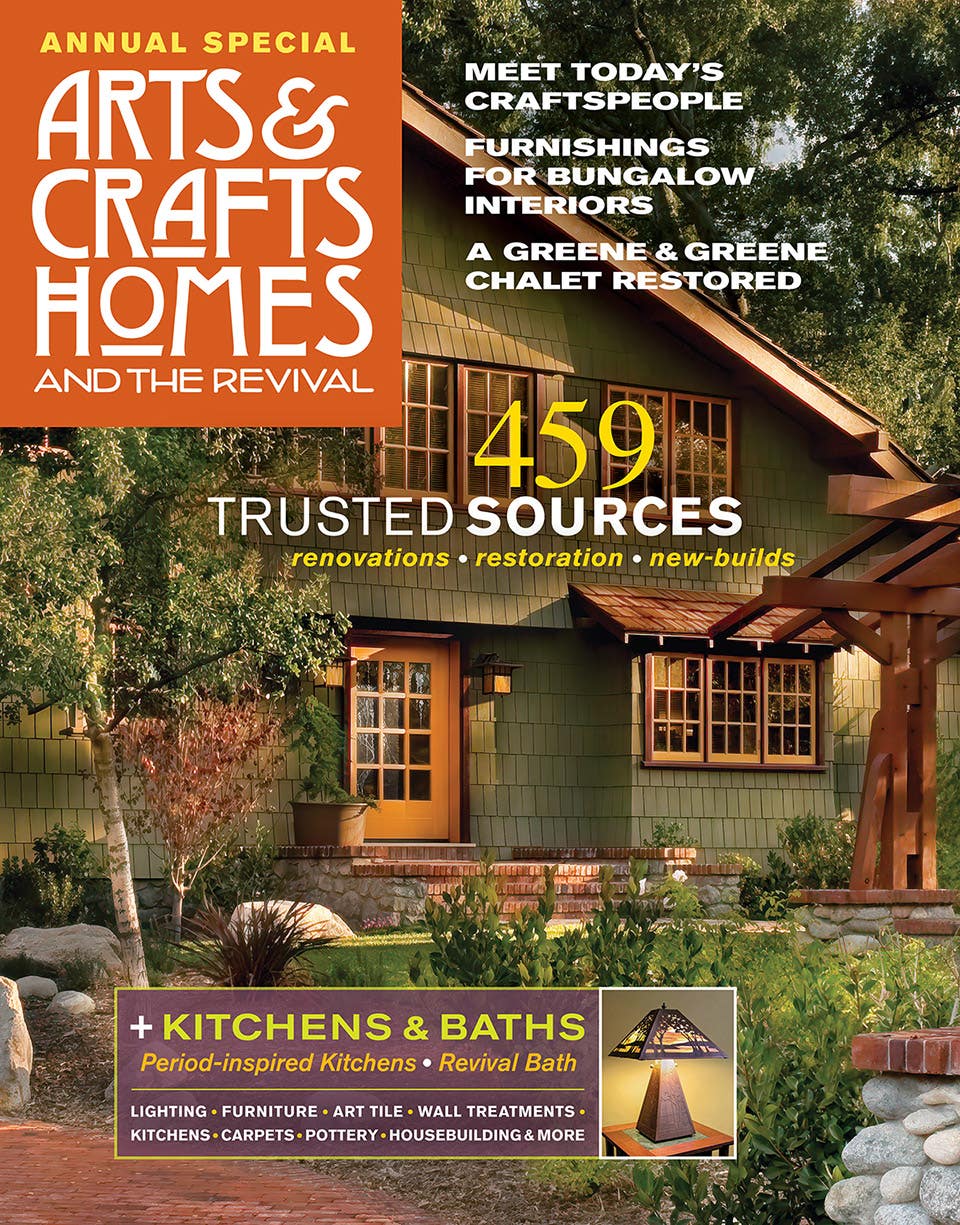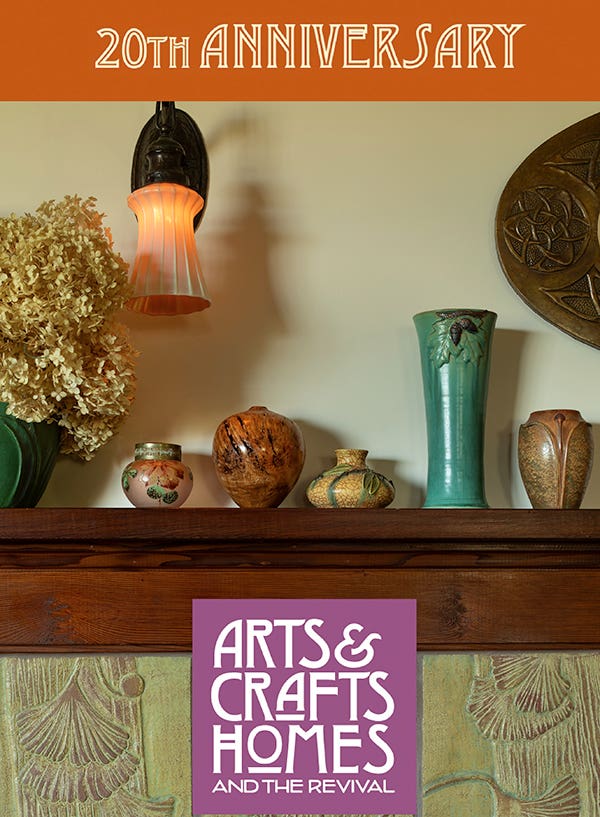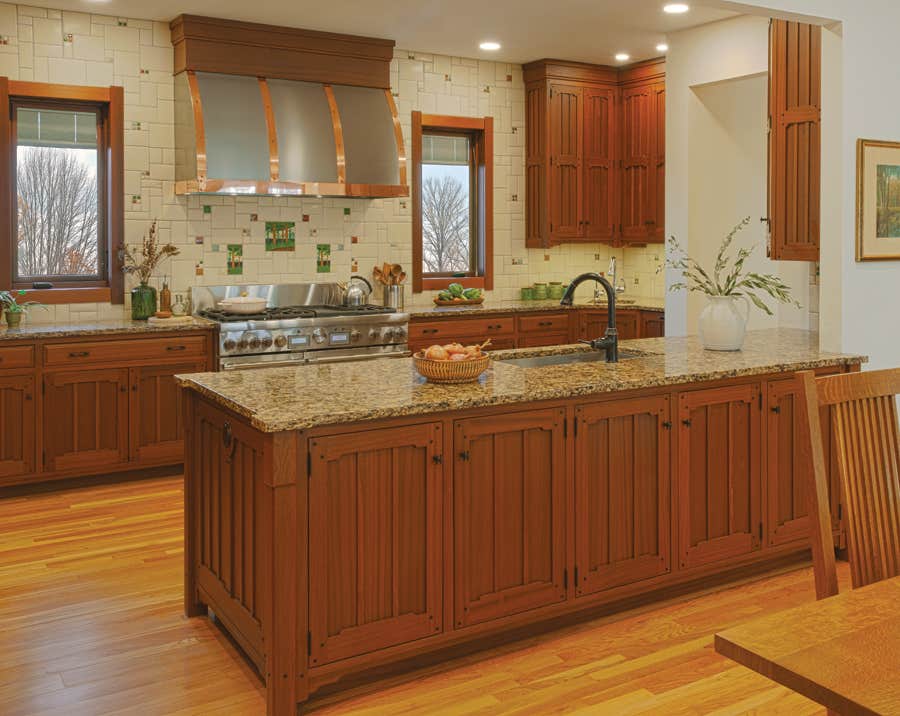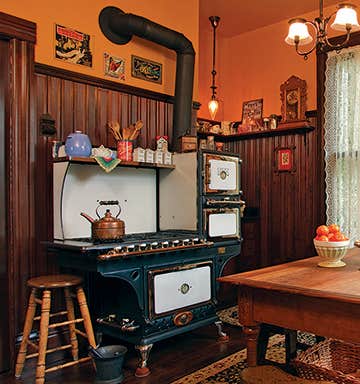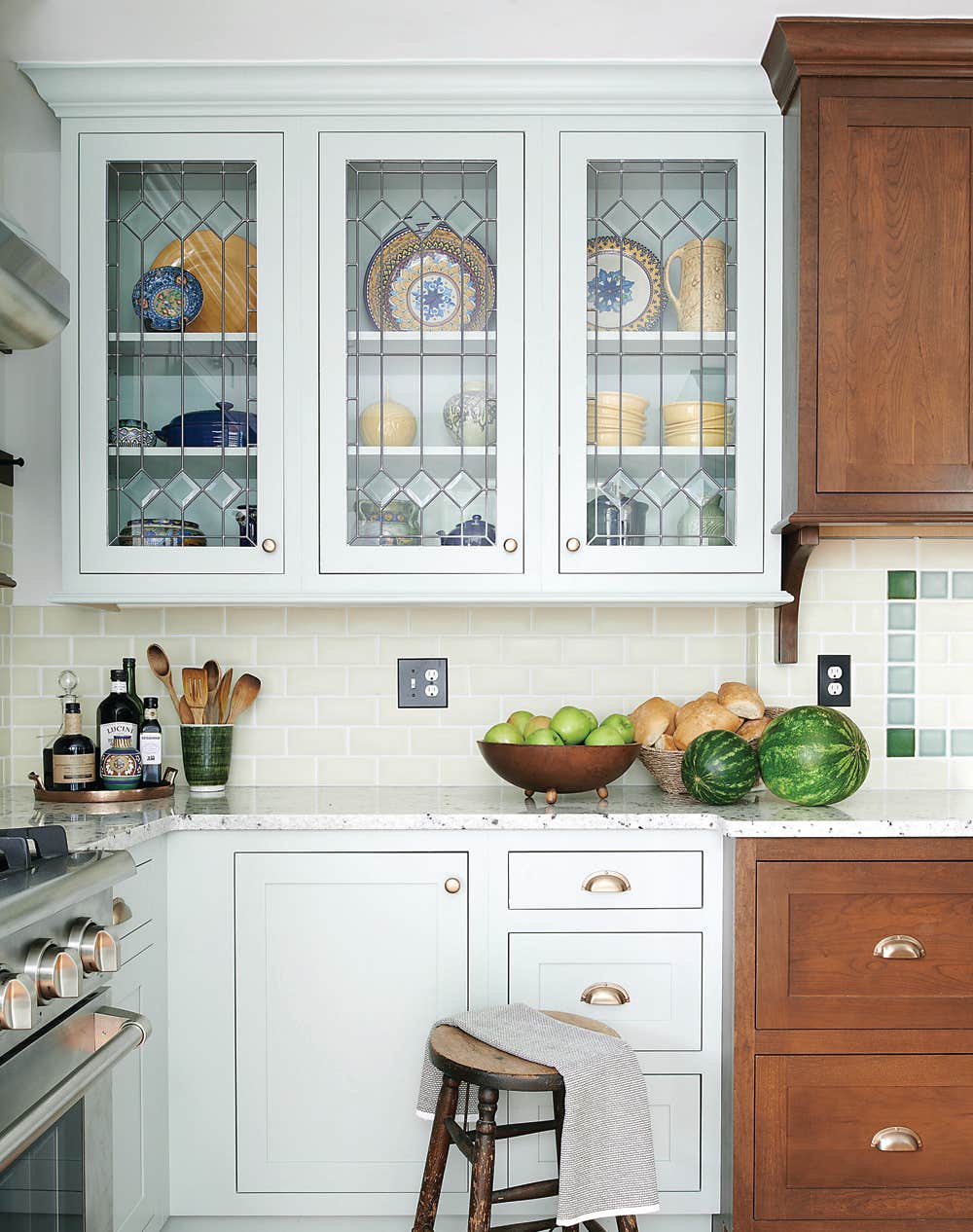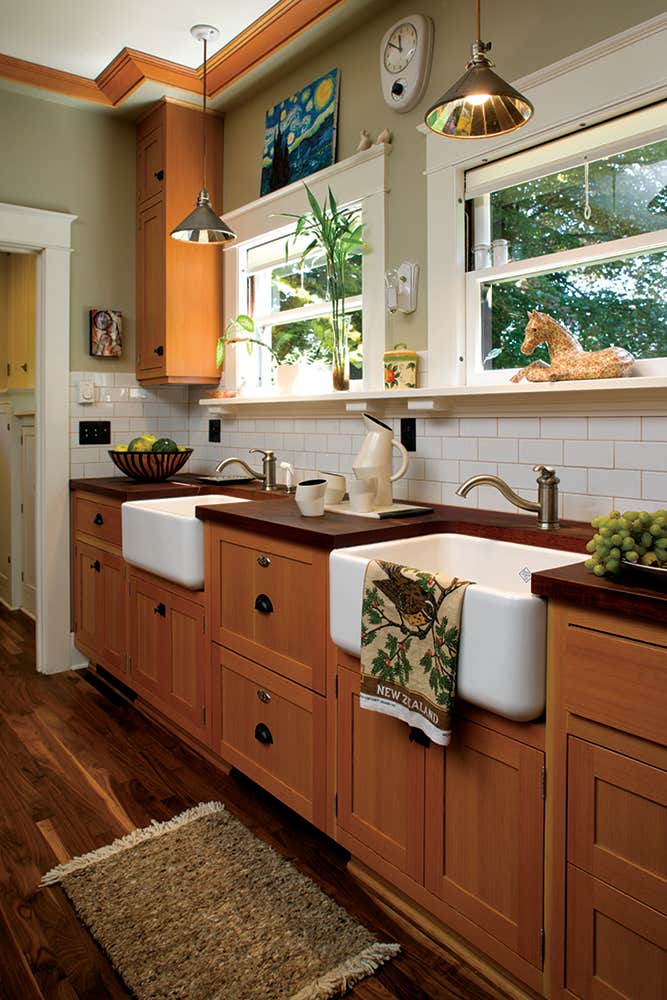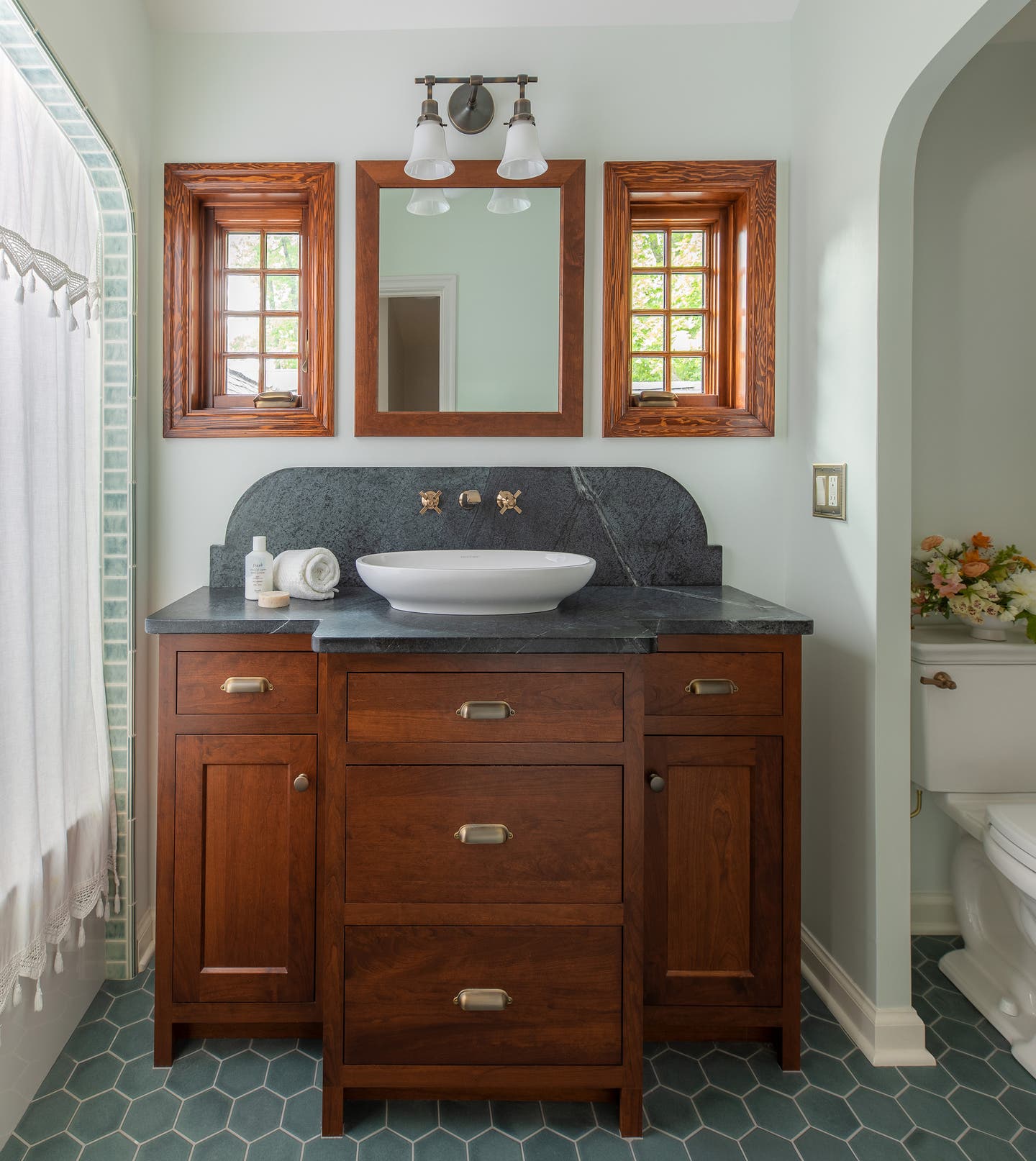Efficient, Modest Bathrooms
How to maximize space, solve storage woes, and set the style.
You’d never believe it, scanning the high-end decorating magazines or visiting a bath-fixtures showroom, but some people are perfectly happy with their small bathrooms. Usually, these people live in old houses. Theirs is not the spa bath with marble walls, a full sauna, and separate water closet. Old-house baths, sized for one occupant at a time, are efficient, easy to clean, and—well, seemly.
Bungalows, in particular, probably don’t have room for a luxury bathroom, unless you’ve added master suite or taken over a bedroom. (The latter is common in houses built before plumbing came indoors.) Nevertheless, an existing bathroom of modest size can be made to look good, and its capacity stretched.
Solutions include built-in cabinets, furniture, and enclosures; making use of nooks and low walls; choosing small bath fixtures; maximizing space with a few design tricks; and unifying the room with fixture style, color, and finishes.
Even in the bathroom, a period-inspired approach results in a unique space that’s charming regardless of size. Oddly enough, you may have inherited the white subway tile, wood wainscot, capacious sink, clawfoot tub, deep linen closet, or old-fashioned medicine cabinet that are coveted in today’s mansion-size bathrooms. The bathroom familiar from the early 20th century works well in almost all houses (since the basics haven’t changed much since), but—depending on your decorating choices—the room can be rendered in classic, cottage, Craftsman, Deco, or Modern style.
Small Bath Strategies
1. Gain Space: Sometimes you do want a larger bathroom—for multiple users, to include both tub and shower, or because the existing room is a ca. 1900 water closet. If adding a master suite is not under consideration, you’ll have to borrow space from another room. Best bets include taking over the smallest bedroom; absorbing an adjacent closet; encroaching into the stair landing or hall.
2. Maximize Space: Using glass expanses—for the shower enclosure or even in the linen-closet door—allows the eye to see to the full perimeter of the room. Large mirrors expand the perception of space. A pedestal or console sink reveals more of the floor area. A flat wall unit can replace the clunky old radiator. A spacious shower with a seat is more usable (and more space-efficient) than a bathtub; tiny sink basins and corner sinks and toilets are widely available. Wood strip flooring or linoleum tiles, laid on the diagonal, make a room feel bigger, as does a floor of small tiles.
3. Find Storage: Build cabinets or shelves into wall spaces between studs. Use a vanity cabinet with hidden storage under your sink basin. Conversely, choose a wide pedestal lav for extra toiletry items, along with glass shelves. Taking a cue from pantry and kitchen, build tall, shallow cabinets from countertop to ceiling. Make liberal use of old-fashioned hooks, rings, train shelves, tub caddies, and towel bars.
4. Create a Jewel Box: A tiny room is an opportunity to overdo it without spending a fortune (or overwhelming the house). Don’t go “all white” in an attempt to make the room feel bigger; it won’t. Instead, consider wallpaper or a papered dado or wood wainscot, color on the ceiling, art tile (or an exotic tiled floor), period or art lighting, and custom woodwork.
Patricia Poore is Editor-in-chief of Old House Journal and Arts & Crafts Homes, as well as editorial director at Active Interest Media’s Home Group, overseeing New Old House, Traditional Building, and special-interest publications.
Poore joined Old House Journal when it was a Brooklyn-brownstoner newsletter in the late 1970s. She became owner and publisher and, except for the years 2002–2013, has been its editor. Poore founded the magazines Old-House Interiors (1995–2013) and Early Homes (2004–2017); their content is now available online and folded into Old-House Journal’s wider coverage. Poore also created GARBAGE magazine (1989–1994), the first unaffiliated environmental consumer magazine.
Poore has participated, hands-on, in several restorations, including her own homes: a 1911 brownstone in Park Slope, Brooklyn, and a 1904 Tudor–Shingle Style house in Gloucester, Massachusetts, where she brought up her boys and their wonderful dogs.

